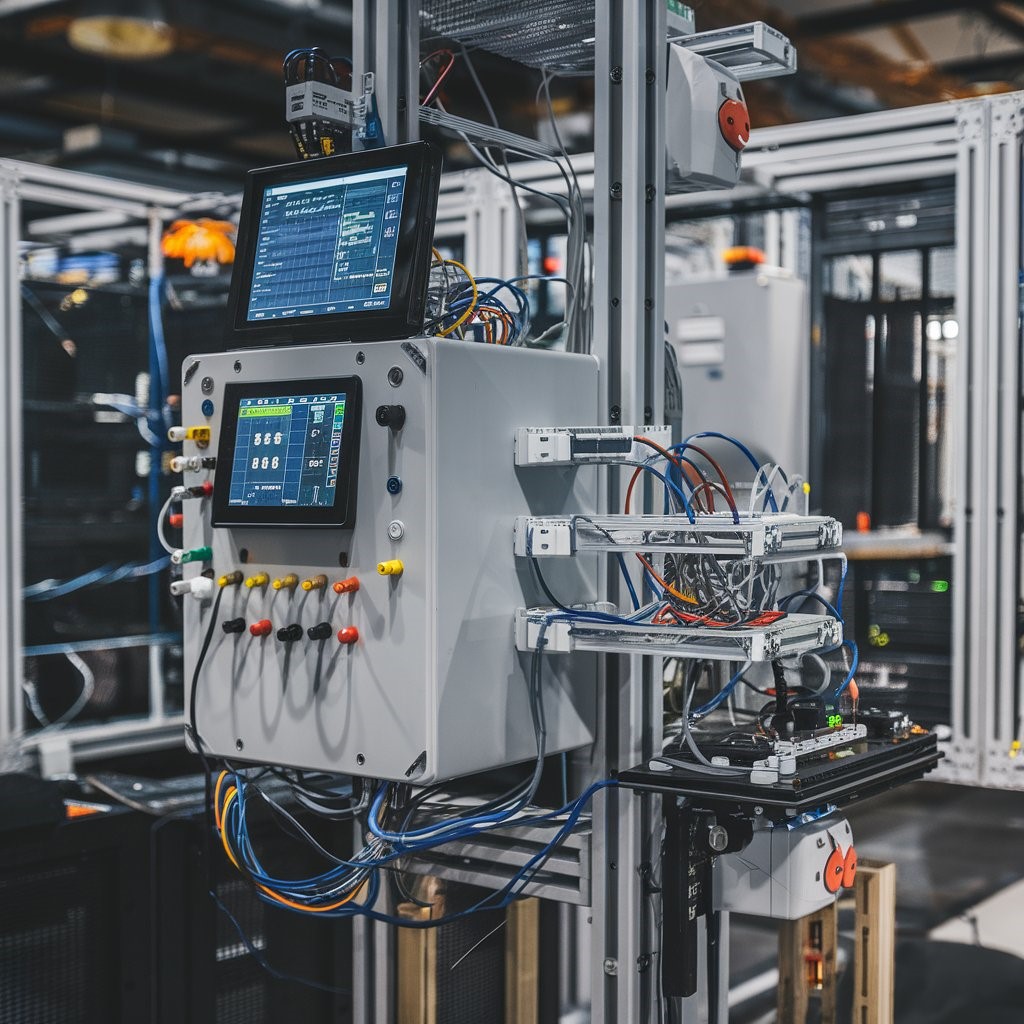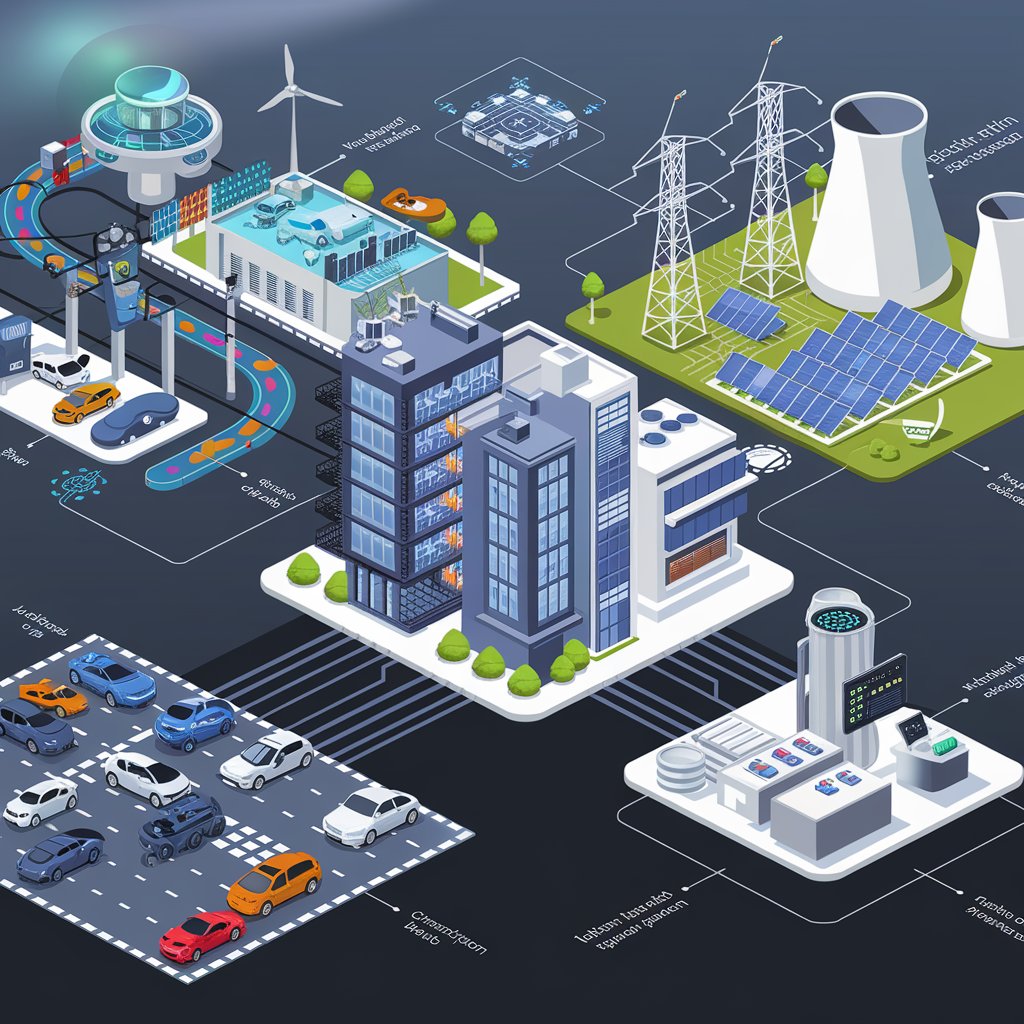The integration of physical processes with computing, networking, and data analytics has spurred an era of remarkable innovation. Known as Cyber-Physical Systems (CPS), this technology combines the digital and physical worlds through the use of sensors, actuators, and networked systems to monitor, control, and optimize various applications. In North America Cyber-Physical Systems Market is emerging as a cornerstone of digital transformation, shaping industries, driving automation, and accelerating the Internet of Things (IoT) evolution. With diverse applications across manufacturing, healthcare, transportation, and energy sectors, the Cyber-Physical Systems market is redefining how industries operate and paving the way for a smarter, more connected world.
What are Cyber-Physical Systems?
Cyber-Physical Systems (CPS) are intelligent systems that link the physical environment with computational elements. Through sensors, devices, and real-time data processing, CPS enables the automation of tasks, real-time decision-making, and predictive capabilities. These systems can operate autonomously or interact with human operators, creating advanced networks for controlling physical assets or environments.
The primary components of a CPS include:
- Sensors: Capture real-time data from the physical world (e.g., temperature, pressure, position).
- Actuators: Translate digital data into physical actions or outputs.
- Control Systems: Process data, execute algorithms, and generate outputs for decision-making.
- Connectivity: Seamless network connectivity to enable data exchange, remote access, and cloud-based analytics.
These interconnected systems enable organizations to optimize processes, enhance performance, improve safety, and create new business opportunities.
Key Drivers of North America’s CPS Market Growth
North America is witnessing a significant surge in the adoption of Cyber-Physical Systems due to a variety of factors that include technological advances, industrial needs, and evolving consumer expectations. The key drivers for growth in the region’s CPS market are as follows:
1. Industry 4.0 Revolution
The adoption of Industry 4.0 technologies—such as automation, IoT, and cyber-physical systems—is transforming traditional manufacturing practices. By integrating smart systems that communicate and interact with each other, manufacturing companies in North America can improve production efficiency, reduce downtime, and optimize resource management. CPS enables predictive maintenance, real-time monitoring, and automated decision-making, thus enhancing factory floor performance.
2. Demand for Smart Manufacturing Solutions
Manufacturers are increasingly investing in CPS to leverage data-driven insights and enhance operational efficiency. Automated production lines, smart factories, and robot-assisted processes are now commonplace. CPS enhances the ability to monitor equipment performance, improve supply chain management, and increase production flexibility, thereby boosting overall productivity.
3. Advancements in IoT Technology
The growth of the Internet of Things (IoT) has provided the necessary infrastructure for CPS to thrive. IoT enables devices to communicate and share data through interconnected networks, which is crucial for CPS applications. For example, in the automotive industry, connected vehicles that rely on IoT systems (like autonomous driving technology) use CPS to make real-time decisions based on external environmental data. The combination of CPS and IoT is enabling smarter, more autonomous systems across various sectors.
Download PDF Brochure @ https://www.marketsandmarkets.com/pdfdownloadNew.asp?id=150375126

4. Increased Focus on Energy Efficiency and Sustainability
Energy efficiency and sustainability have become a focal point for both consumers and industries. CPS technology offers solutions for energy management, allowing organizations to monitor and optimize energy consumption across buildings, factories, and smart grids. In the energy sector, CPS allows real-time grid monitoring, enhancing efficiency and reliability while supporting the integration of renewable energy sources.
5. Government Support and Industry Initiatives
In North America, both government and private-sector initiatives are accelerating the adoption of CPS. Governments are incentivizing the development of smart cities and advanced infrastructure, offering grants and funding to develop CPS-based solutions. For example, U.S. initiatives like the Smart Cities Challenge are investing in CPS to improve urban infrastructure, transportation, and environmental sustainability. Similarly, Canada’s push toward energy-efficient smart grids is driving CPS adoption.
Key Applications of Cyber-Physical Systems in North America
Cyber-Physical Systems have diverse applications in North America, transforming a variety of industries. Below are some key sectors where CPS is playing a vital role:
1. Manufacturing and Industrial Automation
In the manufacturing sector, CPS is the backbone of smart factories and advanced robotics. These systems enable machines to communicate with each other and with central control systems to optimize production processes. For instance, predictive maintenance systems use real-time data to monitor equipment conditions and predict failures, reducing downtime and maintenance costs. CPS also helps with supply chain optimization by tracking materials and components in real-time.
2. Autonomous Vehicles and Transportation
Autonomous vehicles rely heavily on Cyber-Physical Systems to process real-time data from sensors, cameras, and GPS systems. CPS helps in decision-making processes related to navigation, obstacle detection, and collision avoidance. In North America, several companies are investing in self-driving car technology, contributing to the growth of the CPS market in the transportation industry. CPS also plays a significant role in smart traffic management and logistics optimization, ensuring safer and more efficient transportation systems.
3. Healthcare and Medical Devices
The healthcare industry is undergoing a digital transformation through the integration of Cyber-Physical Systems. CPS is used in wearable health devices, smart implants, and remote patient monitoring systems to collect data and make real-time decisions regarding patient health. For example, smart prosthetics leverage CPS to allow better control and movement based on real-time feedback from the human body. In hospitals, CPS-based systems can assist with patient management, equipment tracking, and resource allocation.
4. Smart Grids and Energy Management
Cyber-Physical Systems are crucial in the development of smart grids for energy distribution and consumption. CPS enables utilities to monitor power consumption in real-time, optimize grid efficiency, and even integrate renewable energy sources like solar and wind power. In North America, CPS technology is being implemented to create smarter, more resilient energy infrastructures that can respond dynamically to demand and supply changes.
5. Smart Homes and Building Automation
In the realm of smart homes, CPS technology is helping to automate and optimize various home systems such as lighting, heating, and security. Home appliances, thermostats, security cameras, and smart locks, all interconnected via IoT, form a network that enhances the convenience, security, and energy efficiency of a home. In commercial buildings, CPS supports energy-efficient HVAC systems, smart lighting, and occupancy monitoring to reduce operational costs.

Challenges and Opportunities in the CPS Market
While the CPS market in North America presents significant opportunities, there are several challenges that need to be addressed:
Challenges:
- Cybersecurity Concerns: As CPS systems become more interconnected, they are vulnerable to cyberattacks. Ensuring data privacy, secure communication, and protection against malicious interference is crucial for the wide-scale adoption of CPS.
- High Implementation Costs: Implementing CPS solutions requires significant investments in infrastructure, technology, and skilled labor. Small and medium-sized enterprises (SMEs) may face challenges in adopting CPS due to financial constraints.
- Complexity of Integration: Integrating CPS into legacy systems can be complex and time-consuming. Companies need to ensure that existing infrastructure can seamlessly communicate with new CPS technologies.
Opportunities:
- Rising Demand for Automation: Automation is the driving force behind CPS adoption across industries, from manufacturing to transportation. Companies that embrace CPS are well-positioned to capitalize on the automation trend.
- Government Incentives for Smart Technologies: The U.S. and Canada are providing incentives for adopting smart technologies in cities, transportation systems, and energy grids, creating a favorable environment for CPS solutions.
- Technological Advancements: Continuous advancements in artificial intelligence (AI), 5G networks, and edge computing will further enhance the capabilities of CPS, allowing for faster processing, lower latency, and more efficient real-time decision-making.
The Cyber-Physical Systems (CPS) market in North America is experiencing rapid growth, powered by advancements in automation, IoT, and digital transformation. As industries adopt CPS to enhance efficiency, reduce costs, and improve safety, the impact of this technology will continue to reshape various sectors, from manufacturing and transportation to healthcare and energy. While challenges such as cybersecurity and high implementation costs remain, the opportunities presented by CPS—such as enhanced automation, real-time decision-making, and smarter systems—are poised to fuel the future of industries across North America. As we look ahead, CPS will play a central role in driving the next wave of technological innovation and creating more efficient, sustainable, and connected environments.
